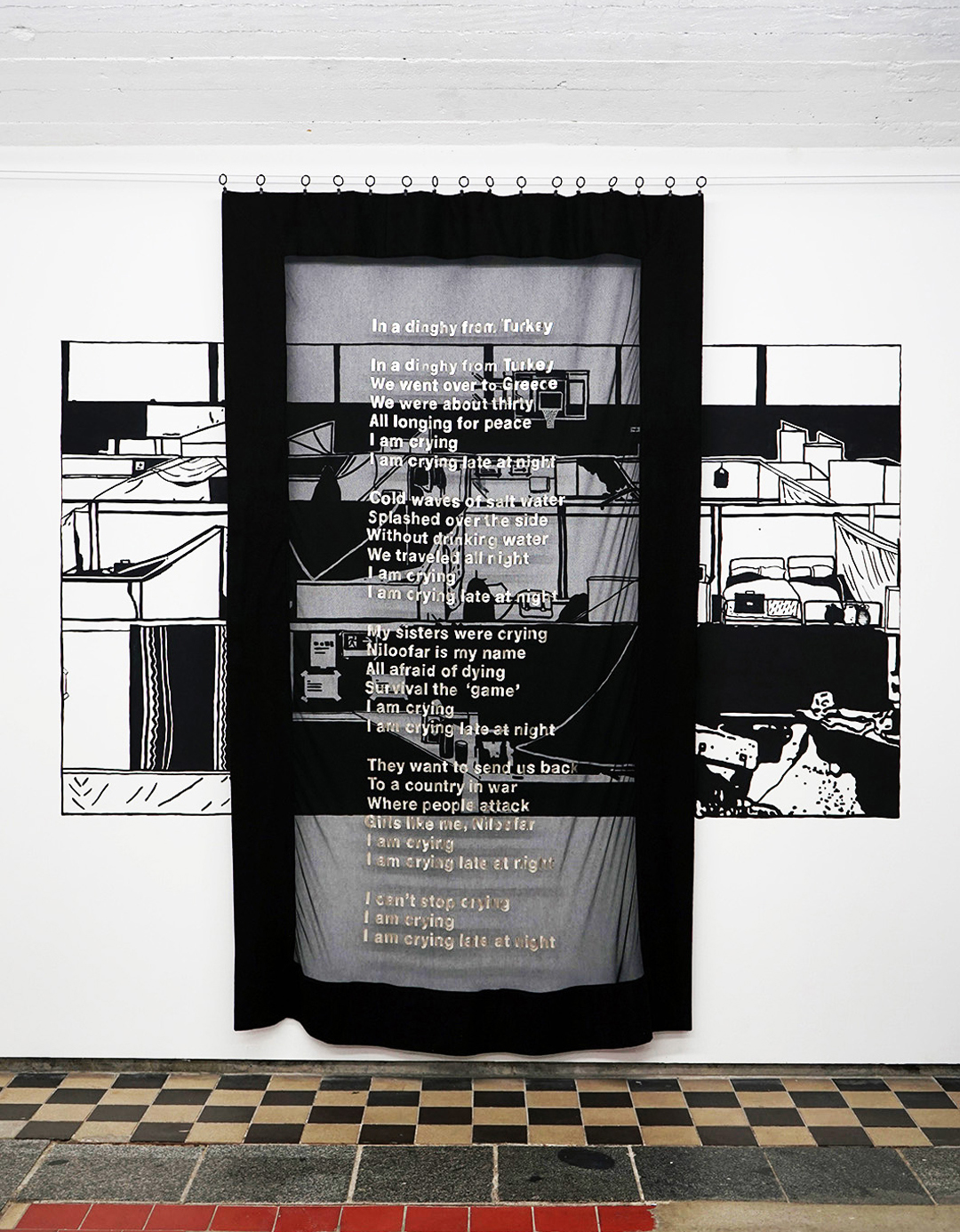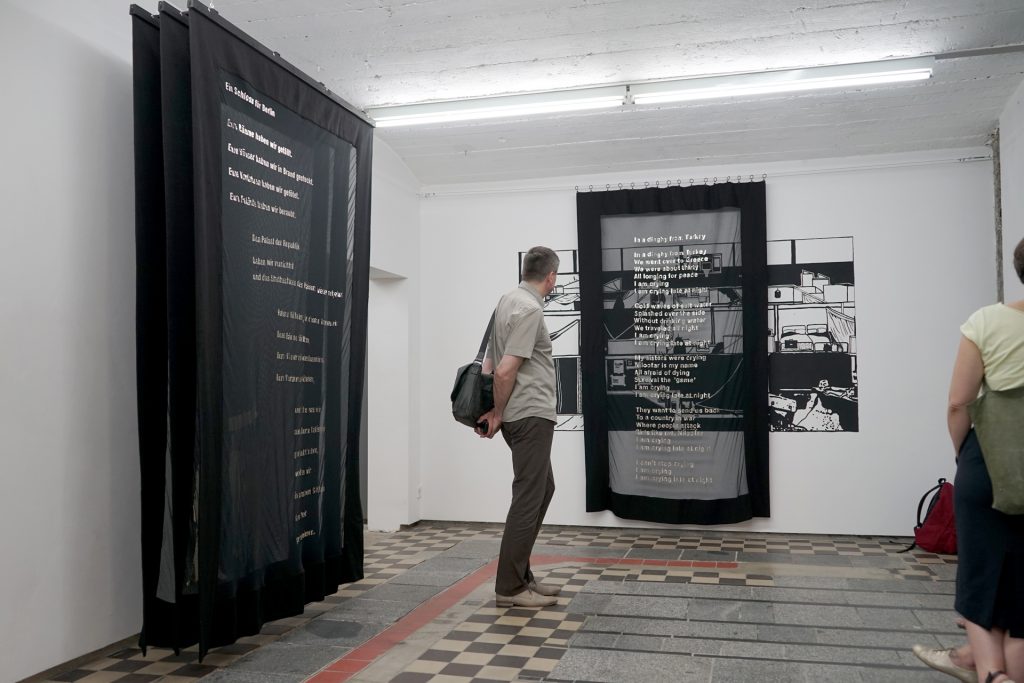Molton framed tulle drape (2,48 m long
x 1,66 m wide) with a song text of silver
foile letters pasted upon it, 2016

In A Dinghy To Turkey, installation view 2016, after the butcher, Berlin
IN A DINGHY TO TURKEY
With „In A Dinghy To Turkey“, Ina Wudtke refers to a song by jazz singer, composer and pianist Nina Simone who released in 1966 the song „Four Women“. It is a strong conceptual work analysing the situation of black women during the civil rights movement in the U.S. Simone’s way of portraying four Afro-American women inspired Wudtke for a series of works portraying refugees in Berlin in form of blues lyrics. As the blues is a musical form of migrating African musical styles into American musical styles (that consist themselves of French military music, European classical music and so on) Wudtke considers the blues language as a fitting medium in order to describe the European refugee situation and especially the one in Berlin. Wudtke had conversations with refugees who were housed in the gym of a school in her neighborhood as a source material for the blues lyrics and portraits. „In A Dinghy To Turkey“ is the first portrait of this programme of works.

In A Dinghy To Turkey, installation view 2016, after the butcher, Berlin